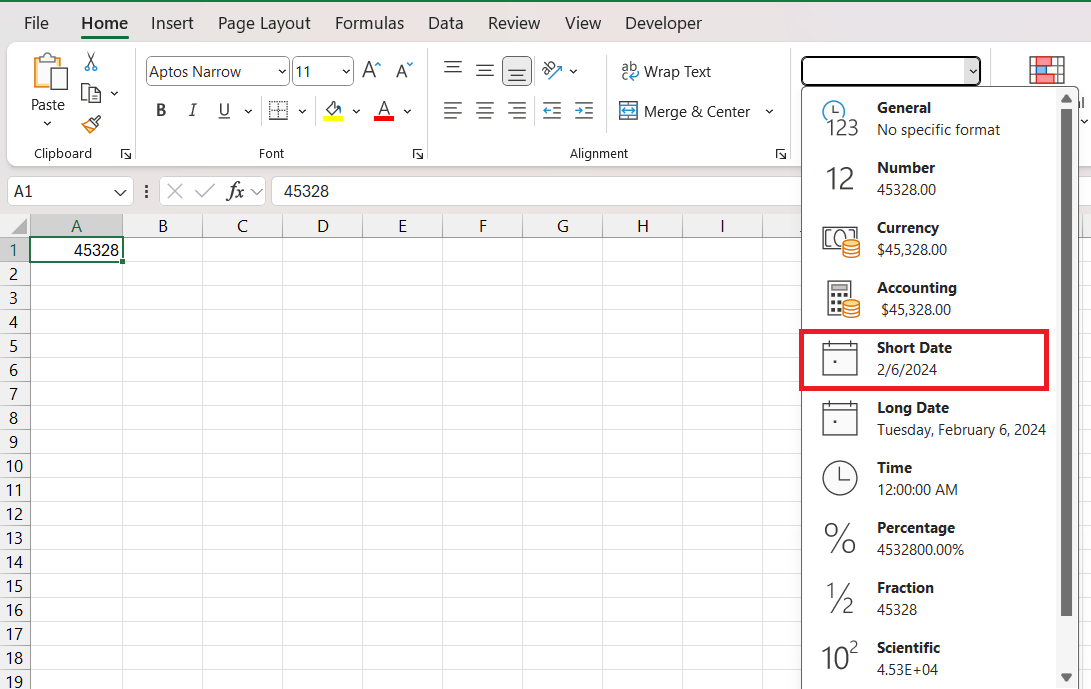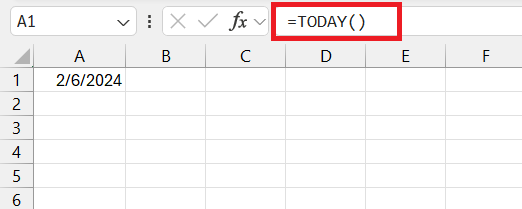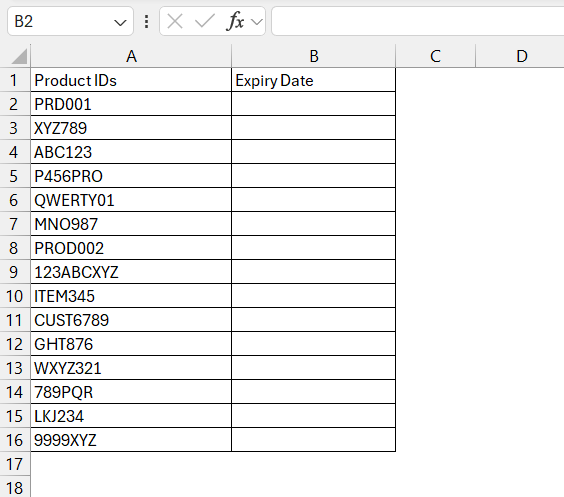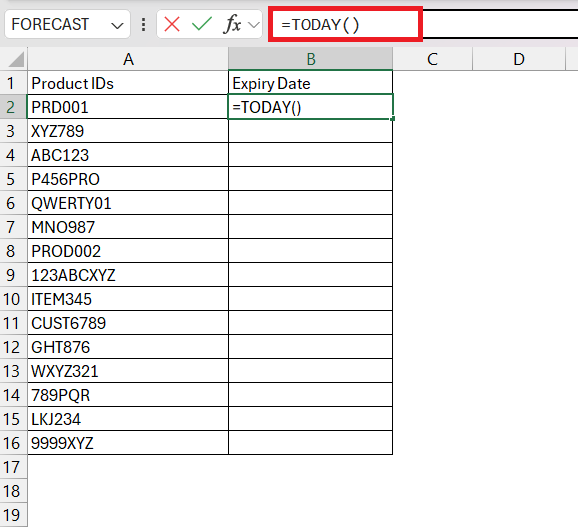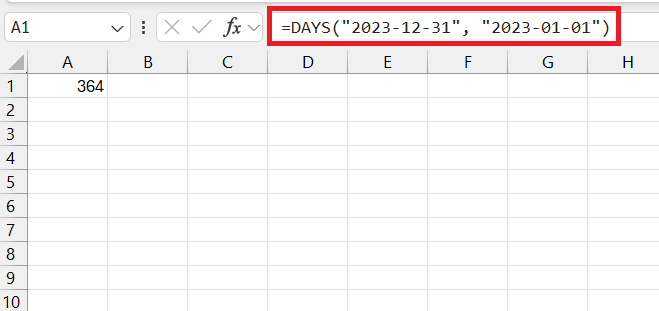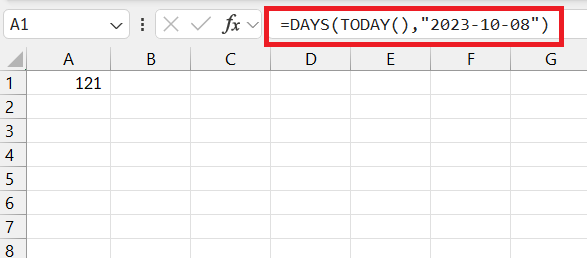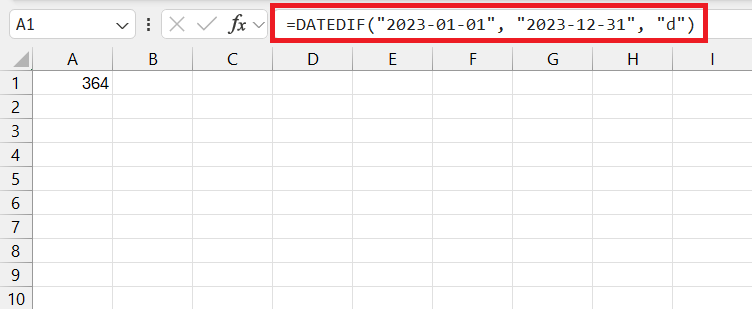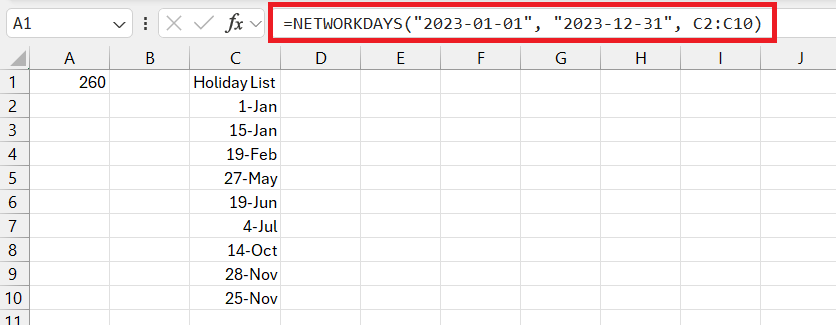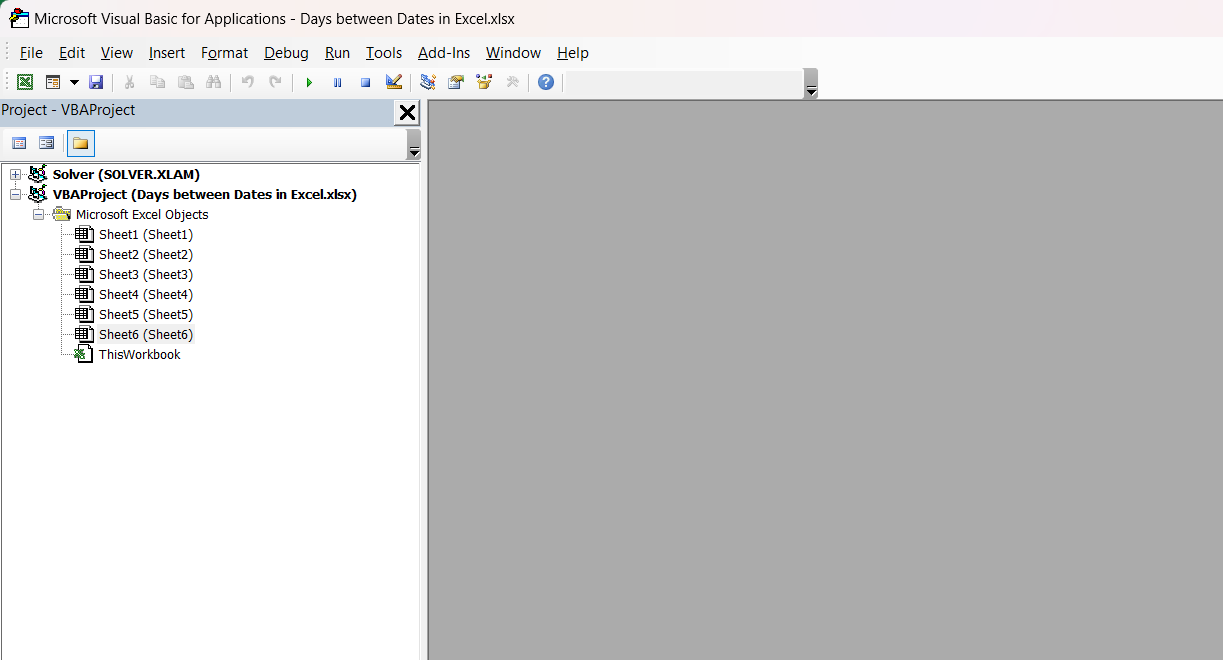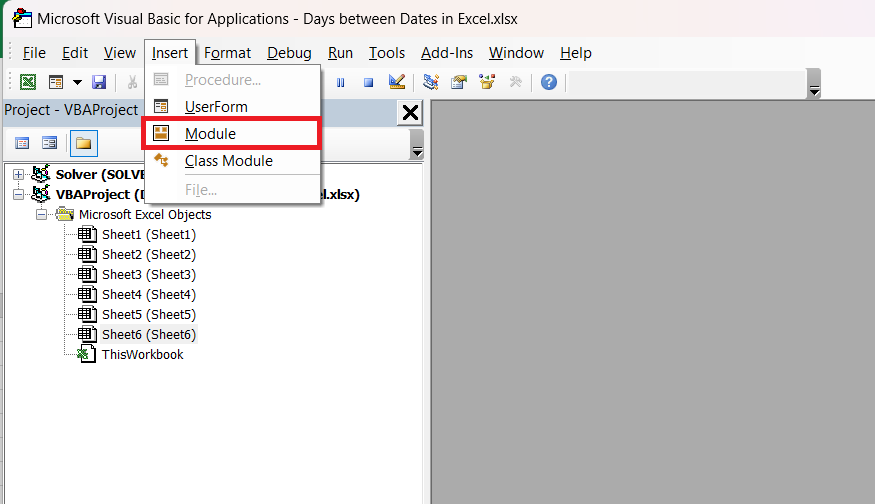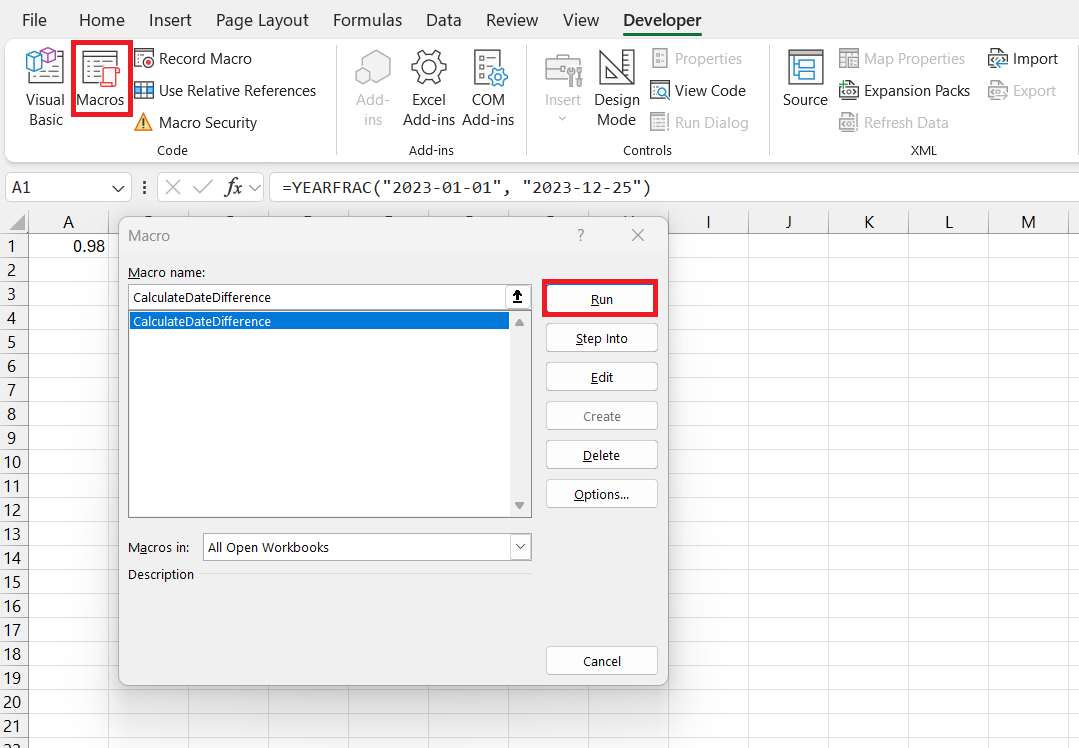Calculating 360 days from today or calculating the number of days between dates in Microsoft Excel are crucial skills for a range of professional and personal applications—from tracking project deadlines to planning events. Fortunately, Excel offers flexible and powerful date functions to effortlessly perform this task.
Whether you need to determine the days passed since a starting date, the remaining time until a future event, or the interval between two specific dates, Excel provides methods to quickly obtain precise results.
Key Takeaways
- Employ the TODAY function to get the current date.
- Use a combination of TODAY and addition operator to add 360 days from today.
- Utilize the DATEDIF function for calculating the difference in days between two specific dates.
- Apply the NETWORKDAYS function to count only working days, excluding weekends and optionally specified holidays.
Understanding Date Formats in Excel
When you’re starting to work with dates in Excel, knowing how dates are stored and formatted is crucial. Excel considers dates as serial numbers, with January 1, 1900, being day one. This might seem quirky but it allows for smooth date-related calculations. Various date formats, such as day/month/year and month/day/year, are just visual representations of these serial numbers. By familiarizing yourself with these formats, you’ll ease into date calculations without a hitch.
The Crucial First Step: How to Enter Dates Correctly in Excel
To correctly enter dates in Excel, you have a few different paths you can take. Whether you prefer typing directly into a cell, using the correct date format for added convenience, or entering serial numbers that represent specific dates, getting the input right is vital. If you’re numerically inclined, you can type the serial number corresponding to your desired date and format the cell as a date.
For precision, consider using formulas or functions that return date values to ensure accuracy. For example – you can use TODAY() to get the current date.
Remember, consistency is key, so using custom date formats or adjusting regional settings can help Excel display your dates just the way you want them.
Table of Contents
The Core Excel Functions for Date Calculations
Calculate 360 days from Today
Using Excel’s date functions makes it easy to calculate the date 360 days from today. Here’s a straightforward guide to get your desired date quickly:
STEP 1: Begin by opening your Excel spreadsheet. Select the cell where you wish to display the date that’s 360 days ahead.
STEP 2: Input the TODAY() function. Simply enter =TODAY() and hit Enter. This action retrieves today’s date.
STEP 3: To add 360 days to today’s date, use this formula
=TODAY() + 360
STEP 4: Press Enter upon entering the formula. The cell will now show the date 360 days from the current date.
Harnessing the Power of the DAYS Function
The DAYS function in Excel is your go-to tool for effortlessly finding the difference between two dates. Simply input your start date and end date as the two parameters, and DAYS will churn out the number of days separating them. Be mindful of the order of your dates – providing the first date second will return a negative number, but you can easily sidestep this by wrapping DAYS in an ABS function for an always positive result.
For Example:=DAYS("2023-12-31", "2023-01-01") returns 364 – the number of days from the start of the year to the last.
Combine DAYS with other functions, such as TODAY(), to compare dates against the current date dynamically.
DATEDIF – The Hidden Gem in Excel’s Date Calculations
While the DAYS function is a straightforward approach, the DATEDIF function is a hidden treasure trove for those seeking to dive deeper into date calculations. Notoriously known for being a legacy feature from Lotus 1-2-3 days, DATEDIF offers additional units of measurement beyond days, including months (“m”) and years (“y”). You’ll write this function manually in the formula bar, with the syntax =DATEDIF(start_date, end_date, unit). It’s essential to use the right date format and ensure the start date precedes the end date to avoid errors.
For Example:=DATEDIF("2023-01-01", "2023-12-31", "d") grants you the total days in the year 2023.
This function is particularly beneficial when you need to circumvent years and pinpoint just the day or month difference; using “yd” or “ym” as the unit permits you to do just that.
Advanced Techniques for Precise Date Calculations
Excluding Weekends & Holidays with NETWORKDAYS
Navigating through work schedules or project timelines while considering public holidays and weekends? No problem. Excel’s NETWORKDAYS function is the ace up your sleeve. It calculates the number of working days between two dates, automatically skipping Saturdays and Sundays. For customized accuracy, NETWORKDAYS also lets you exclude a list of specified holidays.
The syntax looks like this: =NETWORKDAYS(start_date, end_date, [holidays])
For Example:=NETWORKDAYS("2023-01-01", "2023-12-31", C2:C10) where A2:A10 contains holiday dates.
Top 5 Features of NETWORKDAYS:
- Excludes weekends by default.
- Option to exclude holidays for precise workdays calculation.
- Supports a range of cells for the holiday list.
- Returns a positive integer representing working days.
- Useful in calculating employee leaves, project deadlines, and more.
Benefits:
- Accurate planning and scheduling.
- Enhanced payroll and leave management.
- Streamlines project management tasks.
- Prevents miscalculations in business operations.
- Customizable as per business-specific holidays.
Cons:
- Might need manual updating for holiday lists.
- Not suitable for non-traditional work weeks.
Ideal for HR professionals, project managers, and anyone who deals with scheduling and deadlines in their day-to-day operations.
Using YEARFRAC for Fractional Year Calculations
When prorating or calculating time spans in partial years, the YEARFRAC function steps in as a lifesaver. This versatile function calculates the fraction of a year that has passed between two given dates, which is ideal for accurately handling tasks such as determining interest accrual or calculating employee benefits on a pro-rata basis.
The syntax is: =YEARFRAC(start_date, end_date, [basis])
The optional ‘basis’ argument lets you define how Excel should count days per year, catering to different financial conventions.
For Example:=YEARFRAC("2023-01-01", "2023-12-25") would yield roughly 0.98, indicating almost a full year.
Benefits:
- Precise accounting for financial projections.
- Simple age or tenure calculations in years.
- Pro-rata calculations for benefits and payments.
- Ability to align with different accounting standards.
- Enhanced accuracy in time-based analytics.
Cons:
- Requires understanding of basis conventions for full precision.
Best for financial analysts, HR managers, and accountants requiring exact fractional-year figures for complex year-round calculations.
Automating and Troubleshooting Your Date Calculations
Speed Up with Macros: Automating Date Difference Calculation
If manually inputting date calculation formulas is slowing you down, it’s time to automate the process with Excel macros. Macros can execute repetitive tasks at the click of a button, streamlining your workflow.
Creating a Basic Date Difference Macro:
STEP 1: Press Alt + F11 to open the Visual Basic for Applications editor.
STEP 2: Head to ‘Insert’ and click ‘Module’ to add a new one.
STEP 3: Type your macro. For example, a simple code to calculate the difference between two dates might look like this:
Sub CalculateDateDifference()
Dim StartDate As Date, EndDate As Date, TotalDays As Integer
StartDate = Range(“A1”).Value
EndDate = Range(“B1”).Value
TotalDays = EndDate – StartDate
Range(“C1″).Value = TotalDays & ” days”
End Sub
STEP 4: Return to Excel, access the ‘Developer’ tab, click ‘Macros’, find your macro, and click ‘Run’.
Now, you’ll be able to calculate the day difference with a single button press every time. This same methodology can be adapted for more complex date calculations and can integrate other Excel functions.
Benefits:
- Saves time on repetitive tasks.
- Reduces the risk of manual errors.
- Can handle complex calculations effortlessly.
Cons:
- Requires basic knowledge of VBA.
- Initially setting up macros can be time-consuming for complex tasks.
This is ideal for users who regularly work with date-related data and are comfortable with VBA or those willing to learn to highly optimize their time in Excel.
Navigating Pitfalls: Tips for Troubleshooting Common Issues
When tallying days in Excel, you might run into some hitches. Common errors such as the “#VALUE!” or the “#NUM!” error, or even a “Circular Reference Warning”, can stem from different factors like incorrect formula syntax, invalid date values, or circular references in your formulas. To troubleshoot these hiccups, here are some targeted tips:
- Invalid Date Formats: Ensure that the dates are entered in a format Excel recognizes. If Excel is interpreting your dates as text, it won’t be able to calculate the difference.
- Start and End Date Order: Verify that the start date is indeed before the end date.
- Incorrect Function Usage: Double-check the function’s syntax and parameters. Each function has its own required format, and mixing them up can cause errors.
- Circular References: If you get a “Circular Reference” warning, it means that your formula is referencing its own cell, creating an infinite loop. Lookout for references to the current cell and correct them.
- Holiday List for NETWORKDAYS: Make sure your holiday list range is accurate and there are no overlaps or invalid dates included.
By applying these troubleshooting strategies, you can swiftly overcome common roadblocks in Excel date calculations and keep your productivity unhindered.
Tips and Tricks to Calculate Number of Days in Excel
Calculating the number of days between dates in Excel can be made more effective with a few handy tips and tricks:
- Relative References: Use relative cell references (e.g., “A1”, “A2″…) in your formulas. This allows you to copy the formula across different cells, and Excel will adjust cell references automatically, saving you time and avoiding manual errors.
- Date Functions Combo: Combine different date functions for complex calculations. For instance, use
TODAY()withDAYS()to calculate days from or until the current date. - Fill Handle Tool: Use the fill handle to quickly copy a formula that calculates the days between dates down a column or across a row.
- Conditional Formatting: Highlight deadlines or important dates using conditional formatting. For example, you could change the color of cells when the date difference falls below a certain threshold.
- Data Validation: Use data validation to make sure that only valid dates are entered into cells that will be used in date difference calculations.
By incorporating these approaches, you can navigate through day calculations like a seasoned pro, making the most of Excel’s capabilities and ensuring precision in your work.
FAQs on Mastering Days Between Dates in Excel
How do I use the DAYS function correctly?
To use the DAYS function effectively, type =DAYS(end_date, start_date) in a cell, replacing end_date and start_date with your chosen date references or date strings. Ensure that your end date is the latter of the two to avoid negative values, unless that’s what you’re looking for. Excel will then calculate the number of days between those dates for you. Remember, both dates should be in a recognized Excel date format.
What are the limitations of the DATEDIF function?
The DATEDIF function, while powerful, does have limitations. It’s not featured in Excel’s function guide, so knowledge of its syntax is a must. Also, it sometimes produces incorrect results, particularly when dealing with start dates later than end dates. Moreover, if your date format is incorrect or you use an unsupported unit of time, it will return an error. Use it with care and test it thoroughly in your applications.
Can NETWORKDAYS exclude specific holidays from its calculations?
Yes, NETWORKDAYS can exclude specific holidays. The function has an optional third argument where you can specify a range of cells that list the dates of holidays. Excel will then exclude these dates from the working day count along with the weekends. Ensure that the holiday dates are valid Excel dates and do not include any regular weekend days.
Is there a way to calculate the number of days until a future date from today?
Apply the `TODAY` and `DAYS` functions together: For example, `=DAYS(future_date, TODAY())` will give you the number of days from today until the specified “future_date.”
John Michaloudis is a former accountant and finance analyst at General Electric, a Microsoft MVP since 2020, an Amazon #1 bestselling author of 4 Microsoft Excel books and teacher of Microsoft Excel & Office over at his flagship MyExcelOnline Academy Online Course.

